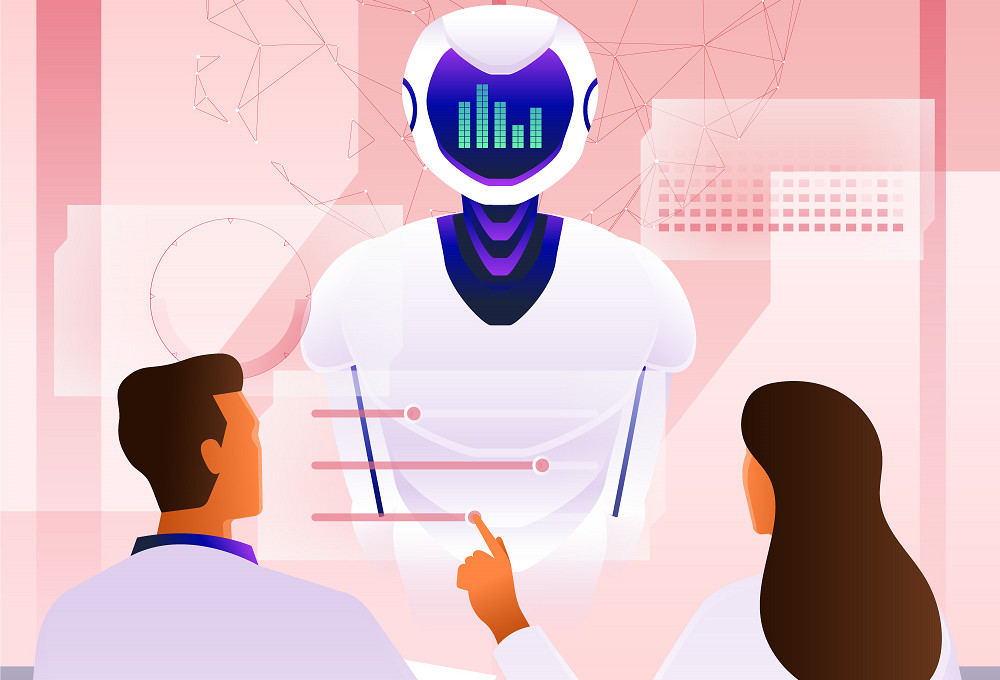Reviews
How AI Is Making Training More Adaptive and Impactful

AI, or artificial intelligence, is the order of the day. It is not only a part of popular culture and entertainment, but it is also bringing about a revolution in terms of creativity and technology. It is changing the way we look at computer learning, as well as the development of online programs and e-learning.
E-learning, or electronic learning, refers to the use of digital platforms and technologies to facilitate educational experiences. It uses the internet, videos, and interactive tools to facilitate learning while making it more interactive and simple.
Key Ways AI Is Enhancing Learning And Development
AI is giving training a serious upgrade. It is faster, easier, and more fun to learn thanks to personalized lessons and smart systems that keep track of your progress. Using AI in training makes it not only smarter but also much more effective.
Data and Learning Analytics
One of the most significant benefits of AI for training and development is that it can gather and analyze data (including data related to learning). This can provide trainers with valuable insights into all the existing learning patterns. These analytics will be of great help for the trainers to enhance the effectiveness of the training programs by inducing data-driven improvements.
Personalized and Adaptive Learning
AI is very helpful when it comes to personalized learning. It enables trainers to design various types of customized learning paths focused on serving the unique learning needs of each employee. It also provides the training managers with valuable data insights. The latter includes learning the employee’s history, performance metrics, and skill gaps. This allows for much more targeted and effective learning strategies.
AI can effectively map existing skills against current job requirements and career paths. This helps employees and employers understand how current skills can align with future opportunities.
Efficiency Through Automation
By using AI, you can automate administrative tasks, such as scheduling them, monitoring each employee’s progress, and evaluating their performance. This enables trainers to concentrate on strategic elements while imparting training. It also helps maximize the return on investment (ROI) regarding training programs.
Continuous Learning
AI promotes continuous learning. How? It offers employees immediate access to any customer’s information and personalized resources. This on-demand access improves ongoing development, enhances just-in-time learning, and helps employees stay updated with industry trends, boosting their performance and productivity.
Cost Effectiveness
Another big plus point of AI is cost-effectiveness. It can substantially cut the expenses of traditional training by automating various facets of the training process and providing scalable solutions for them.
Predictive And Data-Driven Analytics
AI can easily predict the organization’s future skill requirements. This is mainly done based on industry trends and organizational goals. This foresight helps enhance proactive skill development, preparing employees for stronger challenges and more diverse roles in the future.
Artificial intelligence analyzes huge amounts of employee data. This includes performance metrics, skill assessments, and evaluation of current job requirements. This analysis helps to identify specific skill gaps at both organizational and individual levels.
Automated Assessments And Feedback
AI-driven systems can automatically assign tasks, grade them, hold quizzes, and provide instant feedback to the learners. This can reduce the time instructors spend grading while offering immediate insights to students. This helps them identify areas of weakness and also helps them improve faster.
AI-Powered Tutoring And Support
Intelligent tutoring systems, also known as ITS, can use AI to provide real-time support and simulate one-on-one tutoring. This is done chiefly by answering questions, explaining various difficult concepts, and offering an additional practice that copies the behavior of a human teacher.
Natural Language Processing (NLP) In Learning
When it’s powered by NLP, AI can facilitate language learning, translate the content, and offer voice-to-text functionalities. AI chatbots, which use NLP, can answer learner queries 24/7. This enhances student support and reduces the administrative load for trainers, just as it improves customer experience for businesses. Lessening the load on trainers is very important since it leaves them (trainers) free to concentrate and use their energy in places that may require more human attention. This is one of the biggest contributions of AI—taking the load off of humans in industries.
Virtual Classrooms And Collaboration Tools
The virtual classroom experience can be considerably enhanced by AI. This is done by providing a variety of smart collaboration tools, facilitating interactive discussions, and providing real-time feedback.
Challenges And Limitations Of AI In Training
Artificial intelligence (AI) has transformed the training and education sector, but it comes with several challenges and limitations. If organizations are looking to reap maximum benefits, they should work on counteracting the limitations and addressing the challenges.
Data Quality, Privacy, And Security
There are discrepancies with the data provided by an AI model, as it deals with large sets of data, somewhere the quality gets compromised, as acquiring such data is challenging. Another concern is data protection. There is a lot of sensitive personal information fed into the systems, and a breach would raise privacy and security concerns.
Algorithmic Bias And Lack of Transparency
The AI system is completely dependent on the data it is fed. If the data is biased, such as through gender, race, or age, then it will give biased results, unintentionally favoring one group over others. This issue can affect assessments, personalized learning paths, and overall development opportunities for employees. AI systems can often operate like “black boxes,” which means it is difficult to understand how the system makes certain decisions. This lack of transparency might make it harder for trainees to trust AI-driven training, especially in cases of critical learning decisions or performance evaluations.
Cost, Resources, And Ethical Considerations
Integrating AI in training has a high initial cost as it requires AI software, hardware, and integration into the existing systems. Even if the initial cost is covered, there is no guarantee that ROI will justify the expense. Often returns on investment may not always increase at the same pace as the resources are spent. Lastly, there are some ethical concerns that AI could replace human trainers, and it can even lead to employees resisting to chose AI training.
Conclusion
AI is the future, and humans have the power to modify and use it to uplift mankind. Learning and development are crucial to every industry, and AI is playing a huge role in strengthening them in the current period. In the coming days, AI is set to play an even bigger role across industries, and we might as well start preparing ourselves for it. With AI, the impossible can be possible now.

-

 US News5 days ago
US News5 days agoJetBlue flight diverts to Tampa after altitude drop injures at least 15
-

 Breaking News12 hours ago
Breaking News12 hours agoAt least 3 dead, 11 injured after UPS cargo plane crashes near Louisville airport
-

 World1 week ago
World1 week agoU.S. Navy helicopter and fighter jet crash in South China Sea; all crew rescued
-

 World3 days ago
World3 days agoStrong 6.3 earthquake strikes northern Afghanistan; felt across Pakistan
-

 World2 days ago
World2 days agoProtesters storm government building in Mexico after killing of local mayor
-

 World3 days ago
World3 days ago10 people stabbed on train in Huntingdon, England
-

 US News6 days ago
US News6 days agoTrump says U.S. will resume nuclear weapons testing ‘on an equal basis’
-

 US News1 week ago
US News1 week agoDamage reported in Kilgore, Texas following tornado warning




